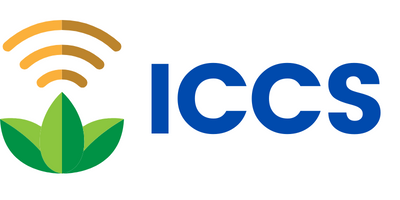
Introduction
Since their inception, cars have captured the hearts and imaginations of enthusiasts worldwide. As a car passionate since my childhood, I’ve witnessed the evolution of automotive technology. However, it was during my tenure as a telecom engineer that I truly became immersed in the groundbreaking world of connected cars.
During 15 years, I had the privilege of working on a pioneering project with one of Europe’s leading car manufacturer, where I witnessed the fusion of automotive engineering and wireless connectivity to create the first mass-market connected car with embedded wireless technology.
In this article, I will share my personal experience with connected cars and delve into the extraordinary advancements that have unfolded in this ever-evolving landscape.
Defining the Connected Car
The term “connected car” has become a buzzword, often accompanied by varying definitions that can lead to confusion. To provide clarity, let’s establish a concise and accurate definition.
A connected car, in its truest form, is a vehicle equipped with embedded wireless connectivity through a Telematics Control Unit (TCU). The TCU serves as the central hub that enables a range of features and services, transforming the car into a mobile device in its own right.
History of Connected Cars
The history of connected cars extends back to the 1980s when the first Formula 1 racing car with an onboard computer paved the way for vehicle connectivity. Since then, connected cars have evolved, shaping the cars we drive today.
Let’s explore the remarkable history and progression of connected cars, highlighting their transformation and the significant advancements along the way.
- Early Integration of TCUs:
During the early 2000s, automakers recognized the potential of wireless communication technologies in vehicles. This led to the introduction of TCUs equipped with wireless modems, which required a SIM card for establishing connectivity. At that time, the SIM card had to be inserted by the car owner into a dedicated slot within the vehicle, similar to how one would insert a SIM card into a mobile phone.
- Rise of Embedded SIM (eSIM) Technology:
The adoption of embedded SIM (eSIM) technology simplified the integration of wireless connectivity in connected cars. With eSIMs directly built into the TCU, the reliance on physical SIM cards was eliminated. This advancement streamlined the manufacturing process and enabled efficient management of connected services for vehicle owners.
- Evolution to Remote SIM Provisioning:
One significant advancement in connected cars is the evolution to remote SIM provisioning. This technology enables car manufacturers to remotely manage the loading of operators onto SIM cards embedded in the vehicles TCUs. With remote SIM provisioning, seamless network switching becomes possible without the need for physical SIM card replacements.
Connected Car Services: From eCall, bCall to Remote Control Capabilities
Connected cars have revolutionized the automotive industry by introducing a wide range of innovative services that enhance safety, convenience and overall driving experiences.
Lets have a quick look at this lightning evolution from the early introduction of eCall, bCall to the advanced remote control capabilities available today.
- eCall: A Lifesaving Service
eCall is an emergency assistance service embedded in connected cars. In the event of an accident, eCall automatically contacts emergency services and transmits important information, such as the vehicle’s location, to facilitate quick response times. This service has significantly contributed to saving lives and reducing emergency response times.
- bCall: Remote Breakdown Assistance
Building upon the concept of eCall, bCall provides remote breakdown assistance in connected cars. With bCall, drivers can request help in non-emergency situations, such as a vehicle breakdown or technical issue. The service connects drivers with dedicated support centers, enabling quick troubleshooting and remote diagnostics. bCall has improved roadside assistance and streamlined vehicle maintenance processes.
- Connected Navigation and Real-Time Traffic Updates
Connected cars offer advanced navigation systems that provide real-time traffic updates, alternative route suggestions, and points of interest along the way. By leveraging connectivity, drivers can optimize their travel routes, save time, and reduce congestion. Connected navigation systems have become indispensable tools for modern drivers, enhancing convenience and efficiency.
- Remote Control Capabilities
Today, connected car services have evolved to include a range of remote control capabilities. Through smartphone applications or web interfaces, drivers can remotely access and control various functions of their vehicles. From locking and unlocking doors to adjusting climate control settings, these services provide convenience and security. Some advanced systems even allow for remote engine start, vehicle tracking, and theft prevention.
The range of connected car services has expanded significantly, offering enhanced safety, convenience, and integration into the digital world. As technology continues to advance, we can anticipate even more sophisticated services that cater to the evolving needs and preferences of drivers, further enriching the connected car experience.
What About You?
Are You Aware of the Connected Car Services Available to You?
As we conclude this brief overview of connected cars and their remarkable evolution, I would like to share a personal observation. In my conversations with various individuals, I have often noticed a lack of awareness regarding the extensive range of connected car services available to them. Many people are unaware of the incredible features and conveniences that modern connected cars offer.
I ask you: Are you aware of the connected car services available to you?
Take a moment to reflect on your own driving experience. Are you currently utilizing the full potential of your connected car?
If you find yourself unsure or curious, I encourage you to explore the capabilities of your vehicle and the connected car services it offers. Consult your car’s user manual, reach out to your car manufacturer’s customer support, or even connect with fellow car enthusiasts and experts to discover the hidden gems of your connected car.
So, the next time you sit behind the wheel, take a moment to consider the potential at your fingertips. Embrace the connected car revolution and make the most of the services and conveniences that modern technology has to offer.




